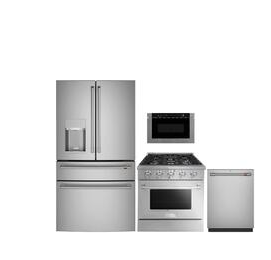Gas stoves: The best option for this winter

Using gas stoves has become an increasingly popular trend, just as the price of electricity has increased. We want you to have this advice on gas stoves handy before they start to become rare in shops since they are unquestionably the best choice for this winter.
The sorts of gas stoves and how they vary from one another will be covered in the next section. You will understand what blue flame and catalytic stoves are, as well as which one is ideal for you.
We'll look at how much a butane stove costs if having one at home is really unsafe, and the advantages of gas stoves.
Types of gas stoves and differences

An easy and economical method to heat a room, garage, workshop, or basement is with a gas burner.
Natural gas-fueled indoor stoves come in a wide variety of designs from manufacturers. There are several varieties of these units with various characteristics created for various living areas and requirements; they are not all the same.
Here are the information you need to know to assist you in choosing the ideal heater for your residence.
Catalytic and blue flame portable gas heaters are the two major types available. And picking between the two has certain distinctions that are important to understand.
Catalytic stoves

A catalytic heater is a kind of flameless heat source that generates heat by dissolving molecules in the air.
In the presence of a catalyst, which is present within the heater, natural gas (or liquid propane gas) in the presence of oxygen produces carbon dioxide, water, and heat via a process known as catalytic combustion.
The temperature at which natural gas ignites in this scenario is much lower. As a result, the combustion process does not include a flame, and instead, emitters of far-infrared waves are developed to generate radiant heat.
As soon as oxidation gets going, the reaction and heating go on until oxygen or the fuel source is extinguished.
Catalytic heating is also substantially more energy-efficient than traditional heating.
Blue flame stoves

Insular rooms are the perfect fit for blue flame heaters. Typically, these affordable units run at a 99.9 percent efficiency level.
The air in front of the heater may get too warm since they heat the whole space. These heaters aren't the best choice for spaces with high ceilings, either.
Because they employ a blue flame to heat the air rather than actual items, these sorts of ventless cooktops use convective heating, which is distinct from traditional radiant or forced air heating. The blue flame guarantees consistent heat distribution across the room with little energy waste, making it efficient and reasonably priced.
How much does a butane stove cost?

Because butane gas stoves work so well, there are usually additional savings at the end of the month. Gas stoves are becoming more and more popular due to their safety and high recommendation, as well as the heat they provide and their cheap cost and consumption, compared to when they first entered the market.
If you divide the 12,500 grammes of butane in the cylinder by the 96 grammes per hour the stove uses at 1320 W, you obtain a duration of around 130 hours. 26 days are obtained by dividing 130 hours by 5 hours each day.
It could last shorter since you can quickly heat the space (10 min) at 4200 W, using 305 grammes of butane every hour, or 51 more grammes per day. As you can see, if you utilise it properly, it may survive for a very long period.










